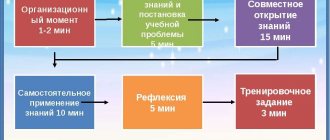Astronomy for children > Solar system > Planet Mars
Interesting facts about the planet Mars for children: description with photos and drawings, place in the solar system, the highest Mount Olympus, satellites, is there life on Mars.
Probably, the little ones already know that Mars is the fourth planet from the Sun. Because of his bloody color, the Romans perceived him as the god of war. They copied the ancient Greeks, who named it after Ares. Other civilizations very often named planets based on color. For example, the Egyptians called “Ee Desher” – “red”, but ancient Chinese astronomers called it “fiery star”. Next, we suggest that you read a full description of Mars, including interesting facts, characteristics of Mars and answers to frequently asked questions about the planet of the solar system for schoolchildren and children of all ages.
№2
Despite the fact that it is located at a fairly large distance from the Earth, it began to be observed in ancient Egypt. Then it was considered an object that travels across the sky. In 1610, Galileo Galilei first observed Mars from a telescope. This allowed us to obtain additional information about this planet. Since the 1960s, several robotic spacecraft have been sent to Mars to study the surface of the Red Planet. Perhaps the most famous rover landing on Mars took place in 2012. The name of this robot is Curiosity Rover.
More than 100,000 people applied for one-way flights
Once upon a time there was a Mars One project. Its organizers wanted to fly to Mars and then broadcast it all on television. Many scientists and specialists were not sure that this project would be possible to implement.
In 2013, they began to select future explorers of Mars . Anyone could apply as long as they were over 18 and under 65 years old. But educated, smart, healthy people have the advantage. Submitting an application is free, but to confirm the seriousness of your intentions, you must also make a donation, the amount of which does not exceed $40.
Already in June 2013, there were 85 thousand people, in August - 100 thousand brave pioneers, and later 165 thousand wanted to take part in the project. Two legal organizations were responsible for the project, one of which went bankrupt at the beginning of 2022. Therefore, now he has no source of funding. Physicist Joseph Roche criticized the organization, and in a documentary filmed by our compatriots, Mars One was called a scam.
№3
He has 2 satellites. Unlike the Earth satellite, the satellites of Mars are much smaller and have a deformed shape. They were named after the twin brothers Phobos and Deimos from Greek mythology. Phobos was a deity in Greek mythology who personified fear. Deimos personified horror. Both were sons of Ares (and therefore Mars) and Aphrodite. Phobos is believed to have a fairly short lifespan. According to scientists, in about 30-50 million years it will break apart or collide with Mars. If you look at Phobos from the surface of the Red Planet, it will be 3 times larger than our Moon.
The composition and structure of Mars - an explanation for children
Atmospheric composition (by volume): 95.32% carbon dioxide, 2.7% nitrogen, 1.6% argon, 0.13% oxygen, 0.08% carbon monoxide, as well as trace amounts of neon, water, krypton, nitric oxide, hydrogen-deuterium-oxygen and xenon.
Magnetic field of Mars: it is not present on a global scale. But there are areas that are 10 times more magnetized than those on Earth (these are remnants of an ancient magnetic field).
Chemical composition: solid core rich in iron, sulfur and nickel. The mantle may be similar to Earth's because it is made of peridotite (silicon, iron, oxygen and magnesium). The crust is mostly made of volcanic basalt, which is also found on the Earth and Moon.
Internal structure: Scientists believe that the core reaches 3000-4000 km in diameter and 5400-7200 km in width. Kora – 50 km.
№4
In fact, it is very similar to Earth. More similar than other planets in the solar system. For example, one day on Mars lasts the same 24 hours as ours on Earth. But there is also a significant difference. In order to go around the sun, the Red Planet takes 2 times longer than the Earth. That is, this suggests that a year on it lasts 687 Earth days. In the summer on Mars, the temperature rises to 20 degrees Celsius, which is also quite comparable to the temperature on Earth. But in winter it can drop to -130 degrees Celsius.
Physical characteristics of Mars - explanation for children
Parents or teachers at school can start a story about the planet Mars and an explanation for children with the bright color of rust. It is caused by minerals rich in iron. This is loose dust and rocks covering the entire surface. The earth's soil is also regolith, but filled with organic matter. NASA says the iron minerals oxidize (rust) and the soil appears red.
Children should understand that due to the cold and thin atmosphere on Mars, liquid water cannot now exist. And although the desert planet is only half the diameter of Earth, it has the same land area.
The image was taken on August 26, 2003 by the Hubble Space Telescope. Then the Red Planet was located 34.7 million miles from our planet. The photo was taken 11 hours before Mars made its closest approach in 60,000 years.
To explain to children a more detailed description of Mars, we should also remember that the largest volcanoes in the solar system are present here, including Olympus (600 km). Its width will allow it to cover the state of New Mexico. It is a shield volcano with slopes that rise gradually, like terrestrial Hawaiian volcanoes. There are also many other types of volcanic landforms on the planet - from small steep cones to giant plains covered with cooled lava. Sometimes small eruptions still occur on the planet.
Researchers think that Valles Marineris formed due to cracks in the crust as it stretched. Lonely canyons grow 100 km wide. They merge in the central part of the Valles Marineris in an area 600 km wide. During the study, many channels were found. This suggests that liquid water could once flow through them.
Canals, ravines and valleys were found everywhere. Some canals reach 100 km in width and 2,000 km in length. It is believed that water may still remain in cracks, gaps and underground rocks.
Did you know?
That Mars has the highest mountain in the solar system - Olympus, and the deepest crevices?
Olympus is the highest mountain in the solar system and reaches 27 km in height (that's three Everests), and the system of Valles Marineris (in honor of the Miriner-9 apparatus that discovered them in 1971) deepens 10 km, stretching from east to west for 4000 km (this is about 1/5 of the distance around Mars, the approximate width of Australia or the distance from San Diego to Philadelphia)
Many Martian regions are composed of flat, low-lying plains. The lowest of the northern plains is one of the flattest and smoothest places in the entire solar system . It is thought to have been created by water that previously flowed across the Martian surface. The northern hemisphere is at a lower altitude than the southern. This suggests that the crust in the northern hemisphere may be thinner. Everything points to some impact after the formation of Mars.
Schoolchildren and children of all ages will be interested to know that the number of craters can vary depending on the age of the surface. Most of the southern part is quite old and filled with sinkholes. This includes the largest on the planet - the Hellas Plain (width - 2300 km). But the northern hemisphere is younger, so there are much fewer craters there. Some volcanoes have several craters at once, which indicates their growth, as lava covers old depressions. Some of them show debris deposits around them that resemble hardened mudflows. It is necessary to explain to the children that this means that the meteorite could have fallen into ice or underground water.
№5
Many people say that Mars could become a future haven for humanity and that scientists are constantly preparing various missions to visit this planet. However, few people talk about how long it will take to reach the “Red Planet”. This will take 8 months. This is even longer than the stay of astronauts on the ISS (International Space Station). Moreover, it still takes 8 months for the astronauts to return home.
The best time to visit Mars is when it is at its shortest distance from Earth. This happened in 2003. At that time, the planets were only 56 million kilometers apart from each other. The maximum distance from Earth to Mars can be 401 million kilometers, which is 8 times more than the minimum.
Infographics
Long ago, when Mars was warmer, there was a lot of water on its surface.
Since those times, traces of rivers, lakes and even entire seas have remained on the planet. However, all this water froze billions of years ago. Since then, the surface of Mars has been tormented by winds and frost - at least for the last hundred million years. The volcanoes, the tops of which jutted out above the dusty atmosphere of the planet, have long disappeared... Or maybe they still exist? Some places on Mars have fairly fresh lava flows. However, living creatures and their traces have not yet been found on Mars. But there is still somewhere to look. The main places on Mars: the southern zone, densely covered with craters, the northern plains, the network of canyons of the Valles Marineris, two volcanic hills, two southern depressions and huge ice caps at the planet's poles.
Map of Mars for children. View in full size.
№6
It hosts the largest dust storms in the solar system. Storms reach their peak at the moment when it is at its minimum distance from the Sun. Dust storms can last for months and spread across the entire planet at the same time. During dust storms, the temperature on it increases significantly, as the dust absorbs the heat of the Sun instead of reflecting it. These dust storms can pose a major problem for Mars rovers by blocking access to the Sun, preventing them from using solar panels to recharge themselves.
№9
In 2015, scientists discovered evidence that Mars had a huge ocean. It was also found that in some places the ocean reached a depth of 1.5 km. From this, scientists assumed that it once had a warm and humid climate, which could have supported life on the planet. Water on Mars now appears as ice on its polar caps. However, relatively recently, scientists discovered unfrozen water on this planet. It appears on the planet only in the summer, when the temperature reaches above zero, and they began to be considered even more as an alternative for the resettlement of humanity.
We also recommend reading: Description of the planet Pluto and interesting facts about it
Polar caps of Mars - explanation for children
From the poles, at distances up to 80 degrees latitude, extensive deposits of finely layered balls of water ice and dust can be seen. They could be deposited by the atmosphere for a long time. They are located on both hemispheres and on their tops one can see frozen ice that persists all year round.
South polar cap of Mars - view from above
In winter, additional seasonal caps appear, made of solid carbon dioxide (“dry ice” - condensed from carbon dioxide gas). In the harshest winter, this ball can extend from the poles to 45 degrees latitude (halfway to the equator). It looks like freshly fallen snow.




